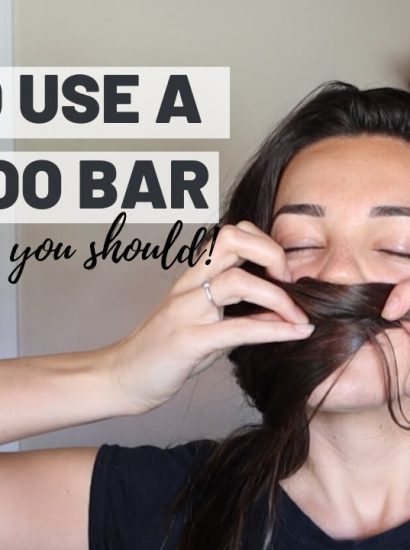It can be worrying for parents to see their child frequently covering their ears with their hands. The first thought that often comes to mind is autism, since sensitivity to sound is a common sign associated with it. However, this behavior does not always indicate autism. Many children cover their ears for reasons that are perfectly normal or related to other factors, such as sensory processing, anxiety, ear discomfort, or environmental overstimulation.
This article will help you understand why children sometimes cover their ears, how to recognize the differences between normal behavior and signs that may require attention, and what you can do to help your child feel more comfortable.
Why Children Cover Their Ears
Children often cover their ears as a natural reaction to sound, discomfort, or emotional stress. It is a simple form of self-protection. Loud or unfamiliar sounds can feel overwhelming, and covering their ears gives them control over the situation. Sometimes it is a way to cope with emotions, such as fear or frustration. For many kids, this is a temporary phase that fades as they grow older and learn to manage their sensory responses better.
Understanding Sound Sensitivity in Children
Sound sensitivity, or hyperacusis, can make ordinary noises feel unbearable to a child. Things like vacuum cleaners, sirens, hand dryers, or crowded spaces may seem painfully loud. This doesn’t necessarily mean autism; it can occur in children with normal development. Some kids simply have more sensitive hearing. In these cases, the behavior is a protective mechanism, not a symptom of a disorder. With time, many children learn to adapt or desensitize to everyday sounds.
Emotional Triggers and Anxiety
Children also cover their ears when they are anxious or scared. Emotional triggers, such as shouting, arguments, or unexpected noises, can cause them to react defensively. When a child covers their ears during stressful situations, it may be their way of saying “I’m overwhelmed.” This is common in children with strong emotional sensitivity. Providing reassurance and a calm environment helps reduce the frequency of this behavior.
Ear Infections and Medical Discomfort
A common medical reason for this behavior is ear pain or pressure. Ear infections, fluid buildup, or sinus congestion can make sounds feel uncomfortable or distorted. Children might cover their ears to relieve discomfort or block out noise that seems louder due to inflammation. If your child’s ear covering behavior appears suddenly or is accompanied by crying, fever, or irritability, it’s important to consult a pediatrician. Treating the underlying issue often resolves the behavior quickly.
Sensory Processing Differences
Not all sensory sensitivities are linked to autism. Some children have mild sensory processing challenges without any developmental disorders. They might be more sensitive to sound, light, or textures. Covering their ears helps them manage overwhelming sensory input. Sensory processing issues can occur on their own and vary from mild to more pronounced forms. Early occupational therapy or sensory play can help children learn to regulate these sensations more effectively.
Environmental Factors and Overstimulation
Noisy or crowded environments can be stressful for children, especially in places like shopping malls, amusement parks, or classrooms. Too many sounds at once can overload a child’s senses, leading them to cover their ears as a form of relief. Even adults experience this occasionally in overwhelming situations. Reducing background noise, taking breaks, or providing quiet spaces can help children adjust and feel calmer in stimulating environments.
Temporary Developmental Phases
Sometimes, ear-covering behavior is simply part of a normal developmental phase. Toddlers and preschoolers are still learning how to process sensory information. They might be curious about sounds or experimenting with how the world feels when they block out certain noises. As they mature, this behavior usually fades away naturally. Parents should observe the pattern rather than panic, as it often resolves with age and experience.
Distinguishing Normal Behavior From Autism-Related Signs
While ear covering alone is not a sign of autism, it’s understandable for parents to worry. Autism Spectrum Disorder involves a combination of behaviors, not just sound sensitivity. Signs might include limited eye contact, delayed speech, repetitive movements, and difficulty understanding social cues. If a child covers their ears but communicates well, engages with others, and shows curiosity about their surroundings, it’s unlikely to be autism-related.
It’s always helpful to speak with a pediatrician or child development specialist if you’re unsure. They can help determine whether your child’s sensory behavior is typical or part of a broader concern.
How to Help a Child Who Covers Their Ears
Supporting a child who frequently covers their ears requires patience and understanding. Here are a few simple ways to help:
- Identify triggers: Notice when and where the behavior happens most often.
- Provide calm spaces: Create quiet areas where your child can retreat when overwhelmed.
- Use noise-reducing tools: Soft earplugs or noise-canceling headphones can help during loud events.
- Model calm reactions: When you stay calm during noisy situations, your child learns to feel more secure.
- Gradual exposure: Slowly introduce your child to louder sounds in a controlled way to help them adjust.
Encouragement and empathy go a long way in helping children build confidence and tolerance to sensory challenges.
When to Seek Professional Help
If your child’s behavior becomes frequent, intense, or interferes with daily life, it might be time to seek professional guidance. A pediatrician, audiologist, or occupational therapist can help rule out hearing problems, ear infections, or sensory processing disorders. In some cases, therapy focused on sensory integration can make a big difference. Early support helps children build coping skills, reducing their need to cover their ears over time.
Remember, seeking help doesn’t mean something is “wrong.” It’s a proactive way to understand your child’s needs and make their world more comfortable.
Conclusion
A child covering ears with hands does not always mean autism. It can be a normal reaction to sound, stress, or physical discomfort. Some children are naturally more sensitive to their environment, and covering their ears helps them cope with noise or anxiety. By observing patterns, addressing possible ear issues, and creating supportive environments, parents can help children feel safe and understood.
Every child’s sensory experience is unique. The key is to approach the behavior with patience, empathy, and curiosity. If concerns persist, professional guidance can provide reassurance and practical strategies for support. With understanding and care, most children grow out of this behavior as they gain confidence and develop stronger coping skills.
FAQs
1. Is covering ears always a sign of autism?
No, covering ears is not automatically a sign of autism. Many children do this due to sound sensitivity, fear, or discomfort. Autism involves a broader range of social and developmental differences, not just this one behavior.
2. Should I worry if my child covers their ears at loud noises?
Not necessarily. Many children find loud noises uncomfortable and cover their ears as a form of protection. If it happens only during very noisy situations, it’s usually normal.
3. Can ear infections cause a child to cover their ears?
Yes, ear infections and fluid buildup can make sounds feel distorted or painful, leading children to cover their ears. If your child seems in pain or irritable, consult a doctor for an ear check.
4. How can I help my child cope with loud sounds?
You can use ear defenders, offer comfort, and teach them relaxation techniques. Gradually introducing them to different sound levels also helps build tolerance.
5. When should I seek professional advice?
If your child frequently covers their ears even in quiet settings, avoids social interactions, or shows developmental delays, it’s best to consult a pediatrician or child specialist for guidance.
Also read: How to Tell If Plastic Is Microwave Safe: Simple Tips to Stay Safe









